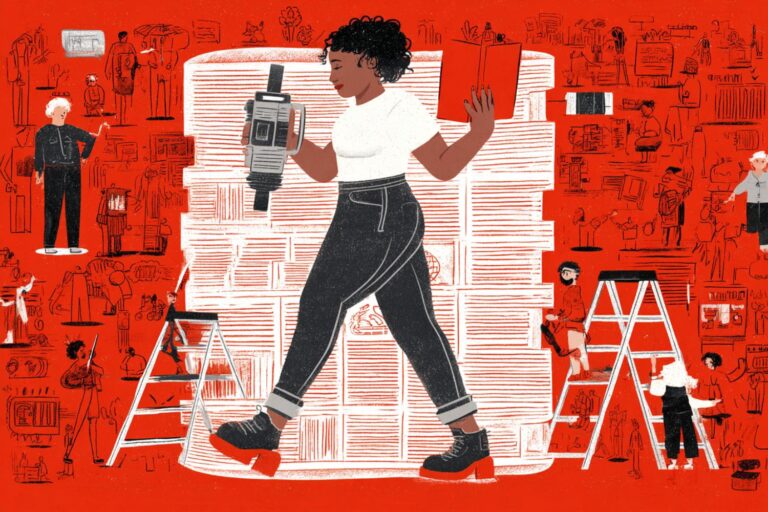HR documentation has not kept pace with the modern workplace. While employee expectations have shifted toward fast, interactive, and mobile-first learning, most HR teams are still distributing static documents. The result: poor engagement, compliance blind spots, and wasted resources.
The failure isn’t in the content itself, it’s in the format. In 2025, employees process information in bursts, not blocks. They want explainer videos instead of 30-page handbooks, chatbot-driven answers instead of outdated FAQs, and quick quizzes instead of endless policy PDFs.
The consequences of ignoring this shift are serious:
-
Lost productivity: Repeated HR queries eat into hundreds of team hours every year.
-
Compliance risks: Critical policies are missed or misunderstood, leaving companies exposed.
-
Employee disengagement: Onboarding takes longer, retention drops faster, and employees start their journey already disengaged.
Forward-thinking HR leaders are already adapting. By turning dense documents into interactive experiences, they’re seeing measurable results: higher retention rates, fewer repetitive questions, faster onboarding, and clearer compliance trails.
This report explores why traditional HR docs fail in today’s workplace, quantifies the hidden costs, and outlines the future-ready formats that HR specialists are adopting to drive clarity, compliance, and engagement in 2025.
The Problem: Why Traditional HR Docs Fail
For decades, HR teams have relied on handbooks, policy manuals, and compliance PDFs to communicate with employees. In 2025, this approach is broken. Here’s why:
1. Information Overload
Most HR documents are 30–50 pages long. Employees rarely read beyond the first few sections. Instead of clarity, they experience fatigue and skip the content altogether. Important policies get buried under jargon and formatting.
2. Low Retention, Zero Recall
Even when employees do read the material, static documents fail to stick. Research shows workers retain less than 10% of written content after two weeks. The outcome: they sign off on policies they don’t truly understand, creating knowledge gaps across the workforce.
3. No Visibility or Tracking
With PDFs or intranet uploads, HR teams have no way to know:
-
Who actually opened the file.
-
How much of it they read.
-
Whether they understood it.
This blind spot leads to repetitive HR queries and compliance risks that go unnoticed until it’s too late.
4. One-Size-Fits-All Delivery
Static docs assume everyone learns the same way. But today’s workforce is multi-generational and global. Gen Z expects interactive, bite-sized formats. Remote employees prefer on-demand explainer videos. Static docs ignore these learning differences and fail to engage.
5. Compliance and Legal Exposure
Unread or misunderstood HR policies don’t just hurt productivity—they expose companies to legal risk. From workplace safety to harassment policies, failure to ensure comprehension can cost millions in lawsuits, fines, or regulatory penalties.
At its core, the problem isn’t that HR teams don’t care about communication. It’s that they’re still using formats that employees have outgrown.
The Cost of Failure: What Ignored HR Docs Really Cost
HR documents that employees don’t read or retain aren’t just an “engagement issue.” They’re a financial and operational liability. Every skipped page and misunderstood policy adds up.
1. Lost Productivity
-
HR professionals spend 30–40% of their time answering repetitive questions that are already “covered” in handbooks.
-
A single onboarding cycle can waste 20–40 hours per new hire when information isn’t retained.
-
At scale: for a company onboarding 100 employees a year, that’s 2,000+ wasted hours—the equivalent of one full-time HR staffer’s workload gone.
2. Increased Financial Costs
-
The average cost of onboarding a new employee is $4,000–$6,000. When HR docs fail, onboarding takes longer, raising costs by 20–30%.
-
Repeated compliance training or re-orientations can burn tens of thousands of dollars annually.
3. Compliance Blind Spots
-
Misunderstood policies = risk.
-
Companies face fines or lawsuits when employees claim ignorance of safety rules, harassment policies, or workplace compliance standards.
-
Legal costs for a single compliance failure can run into six or seven figures, dwarfing the cost of fixing document delivery.
4. Employee Engagement & Retention Impact
-
New hires who disengage in the first 90 days are 2x more likely to quit within a year.
-
Poor onboarding experiences directly correlate with higher turnover. With replacement costs averaging 50–200% of annual salary, a failed HR doc strategy quickly turns into a retention nightmare.
At-a-Glance: The Hidden Costs of Failing HR Docs
| Impact Area | Annual Cost for a 500-employee Company |
|---|---|
| Lost productivity | $150K–$250K in wasted HR hours |
| Extended onboarding | +$200K in training costs |
| Compliance failures | $1M+ in potential legal exposure |
| Higher turnover | $500K+ in replacement/recruitment costs |
Static HR docs don’t just fail to communicate. They quietly bleed organizations of money, time, and trust, making them one of the most expensive “invisible” problems HR leaders face in 2025.
New Expectations in 2025: What HR Teams Must Deliver
The workforce has changed and so have their expectations. HR leaders can’t rely on the same formats they used 10 years ago and expect results. Today’s employees are digital-first, attention-poor, and demand interactive engagement. Here’s what that means:
1. On-Demand, Bite-Sized Learning
Employees don’t want to scroll through 40-page handbooks. They expect information in 2–3 minute chunks: explainer videos, short podcasts, or interactive FAQs. Learning has shifted from “one long read” to snackable, repeatable sessions.
2. Mobile-First Accessibility
With remote and hybrid work dominating, employees want to access policies and training on their phones. Static PDFs on desktops are outdated. In 2025, HR docs must be optimized for mobile consumption: fast, responsive, and friction-free.
3. Personalized, Interactive Experiences
Different employees learn in different ways.
-
Gen Z prefers interactive video and gamified quizzes.
-
Millennials want on-demand access to resources they can revisit.
-
Senior employees need clarity and simplicity without tech overwhelm.
Static docs treat everyone the same, interactive formats adapt to each learning style.
4. Engagement Tracking and Analytics
Executives expect HR to prove impact with data. Leaders no longer accept “We sent out the handbook” as proof of compliance. They want metrics:
-
How many employees opened it?
-
Where did they drop off?
-
Who needs a follow-up?
In 2025, data-driven HR is the standard, not the exception.
5. AI and Chatbot Integration
Employees now expect instant answers. If they can ask ChatGPT for policy clarifications at home, they’ll expect the same at work. HR teams are embedding chatbots into training docs to handle routine queries—freeing HR specialists to focus on strategic work.
In 2025, employees don’t just want information. They want it fast, interactive, trackable, and personalized. HR teams that fail to adapt risk losing credibility, compliance, and talent.
The Solution: From Static Docs → Interactive Experiences
The failure of traditional HR documents isn’t about what’s written—it’s about how information is delivered. The solution is to transform dense, static content into engaging, interactive experiences that employees actually consume and remember.
Here’s how forward-thinking HR teams are doing it in 2025:
1. Video Explainers for Complex Policies
Instead of expecting employees to read 20 pages of text, HR teams are breaking policies into short, 2–3 minute video explainers. Videos drive higher retention, work across all devices, and can be revisited whenever needed.
2. Chatbot-Driven Q&A
Employees don’t want to email HR every time they have a question. Embedding a chatbot inside HR materials lets employees ask questions instantly and get accurate answers, without adding to HR workload.
3. Micro-Quizzes for Comprehension
Instead of “signing off” blindly, employees take short, interactive quizzes after consuming content. This ensures comprehension, reduces compliance risk, and creates a clear trail of accountability.
4. Interactive SOPs and Playbooks
Standard Operating Procedures (SOPs) and handbooks are being rebuilt as clickable, navigable, and interactive playbooks. Employees can jump to exactly what they need, instead of scrolling endlessly.
5. Analytics Dashboards for HR Teams
For the first time, HR leaders can see exactly:
-
Who opened a policy.
-
How much of it they consumed.
-
Where attention dropped off.
This data transforms HR from “hope they read it” to prove they engaged.
How HR Teams Can Fix Onboarding Failure
Consider a mid-sized services firm reviewing their onboarding process in 2025. The challenges look familiar:
-
New hires skim through a 50-page PDF handbook and retain little.
-
HR staff spend hours repeating the same answers to basic questions.
-
Compliance acknowledgement is high on paper—but comprehension is dangerously low.
What if the HR team decided to transform their static onboarding documents into interactive experiences?
What Could Change
-
Handbook → Video Modules: Key policies delivered as short, engaging explainers instead of walls of text.
-
Policy Q&A → Chatbot: Employees ask questions inside the platform, getting instant answers without pulling HR into every detail.
-
Sign-Off → Quizzes: Instead of blind acknowledgements, employees prove comprehension with micro-quizzes.
-
Blind Distribution → Analytics: HR finally sees who engaged, what was skipped, and where drop-offs happen.
The Results They Could See (90 Days Later)
-
Engagement climbing from ~20% to 80%+ of employees completing onboarding content.
-
Onboarding time reduced by 60%, saving HR ~25 hours per new hire.
-
Repetitive HR tickets cut by 70%, freeing up bandwidth for strategic work.
-
Compliance understanding tripled, validated through quiz scores and analytics.
For HR teams, the possibility is real: less wasted time, more confident employees, and a compliant, trackable onboarding process. The gap between failure and success isn’t more policies, it’s delivering them in the right format.
Checklist: Is Your HR Content Failing?
Answer YES or NO to the following:
-
Do you know how many employees actually read your HR handbook or policy documents?
-
Do employees regularly ask the same HR questions that are already “answered” in your docs?
-
Are your HR documents longer than 20 pages?
-
Can you track which parts of your policies employees engage with—or do you just send and hope?
-
Do you rely on sign-offs as “proof” of compliance without testing comprehension?
-
Are onboarding docs delivered in static formats like PDFs or intranet uploads?
-
Can employees access policies easily on mobile, or do they have to dig through emails and portals?
-
Have you measured how much time HR staff spends answering repetitive onboarding or policy questions?
Scoring
-
0–2 YES answers → You’re ahead of the curve. Keep optimizing.
-
3–5 YES answers → You’re in the danger zone. Engagement and compliance gaps are costing you.
-
6+ YES answers → Your HR docs are failing in 2025. Employees aren’t consuming, retaining, or acting on your policies.
If you’re hitting 3 or more YES answers, your HR content strategy is broken and it’s time to rethink how policies, handbooks, and training are delivered.
Stop Sending PDFs. Start Driving Engagement.
Static HR documents are a silent drain on productivity, compliance, and employee experience. You’ve seen the data: long handbooks don’t get read, policies aren’t remembered, and HR teams end up firefighting the same problems over and over.
The good news? Fixing this isn’t complicated. By rethinking how HR information is delivered through video explainers, chatbot-enabled Q&A, micro-quizzes, and engagement analytics, you can transform onboarding and compliance into experiences employees remember.
Forward-thinking HR leaders aren’t waiting for another year of wasted hours and disengaged employees. They’re already moving to interactive, trackable HR content that saves time, reduces risk, and boosts retention.
Your Next Step
Don’t send another handbook no one reads. Instead:
-
Book a demo with DocuStream to see how your HR docs can be turned into interactive assets in days, not months.
-
Or start with our Interactive Onboarding Template Kit: a free resource to test how employees respond when HR content is delivered the way they expect in 2025.
Stop hoping employees will read your policies. Start proving they’ve understood them.













